Why Icelanders love an explosive eruption
- Published
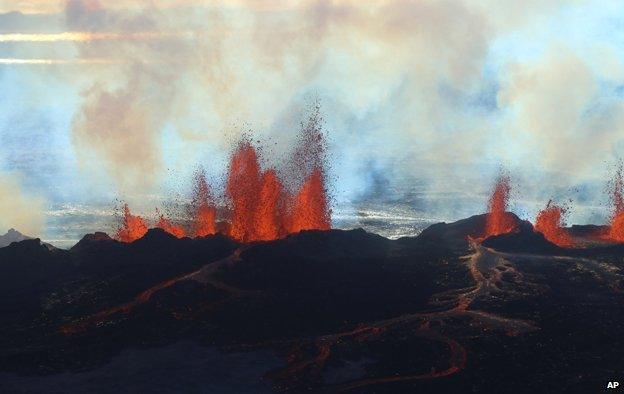
Do you remember that feeling of being a kid, running after your older siblings and you just couldn't keep up? Your little feet would move as fast as they could, but still you'd lag behind? Well, that's how I feel these days - the reason being a volcano.
Every morning I set my alarm for 06:00, not to jump in the shower, but to refresh every website with volcano news from my home country, Iceland. Since 16 August, there have been thousands of earthquakes beneath Europe's largest glacier, Vatnajokull, which covers 3,400 sq miles (8,800 sq km) in south-east Iceland.
Scientists believe that this seismic activity is caused by an enormous amount of magma moving around under the Earth's crust - it might even be moving from one volcanic system to another.
A small eruption started last week, took a break and started again on Friday 29 August with increased force. The fissure is just north of the glacier, so it's only normal lava flow. It's different if there is an eruption underneath a glacier, a sub glacial eruption - then the magma explodes on contact with the ice and out comes ash.

Eyjafjallajokull - difficult to pronounce, but it did become a buzzword in 2010
Hold on - jokull, ash - does that remind you of something? "Volcano, I think I'll call you Kevin." That was comedian Jon Stewart's reaction after watching reporters from just about every major TV station in the world try in vain to pronounce the name of the Icelandic volcano that trashed the travel arrangements of millions of people in April 2010.
The huge ash cloud from that eruption shut down much of Europe's airspace for six days, leading to the cancellation of 100,000 flights. Even US President Barack Obama couldn't fly. He missed the funeral of the late president of Poland, so did Angela Merkel, the German chancellor and Nicolas Sarkozy, the president of France.
Eyjafjallajokull was fourth on Time Magazine's list of top 10 buzzwords, external for 2010, but the airlines weren't happy - the total cost of the shutdown was estimated to have been around $1.7bn (£1bn).
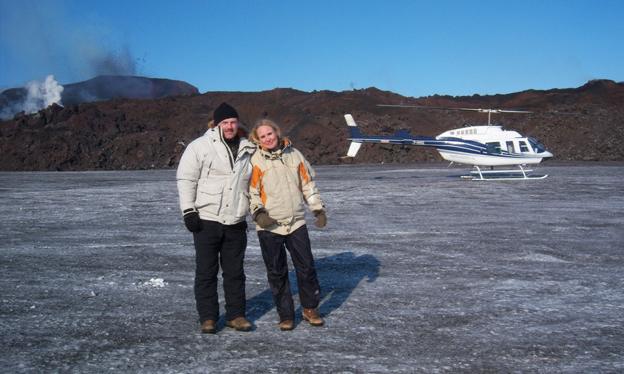
Like many Icelanders, Thora Arnorsdottir loves the country's volcanoes
Now, only four years later, it seems it's time to prepare for more disruption. Geological activity comes in waves, and Iceland seems to be in one such phase now.
The island is located on the middle of the North-Atlantic ridge and for that reason it is being torn apart. Half of the country belongs to the North American tectonic plate and the other half to the Eurasian one. They move half an inch (1.2cm) or so per year in opposite directions, on average. It looks like 2014 is going to be a 20-inch (50cm) year.
That doesn't mean Iceland is actually splitting in two, because enough magma always comes up to fill in the gap. It's not getting larger either, because the Atlantic Ocean nibbles from the shores at a similar pace.
The theory is that just beneath Vatnajokull glacier, there is a hot spot, which has nothing to do with internet connections, but connection to the Earth's mantle. Supposedly, this is one of the few places on Earth where such a hot spot exists and that's one reason why a third of the lava that has run over the planet in the last 500 years has been in Iceland.
Oh, and here's the icing on the cake. The name of the volcano system involved is Bardarbunga-Dyngjujokull. Beautiful, isn't it? Looks like the big sister of Eyjafjallajokull, alias Kevin.
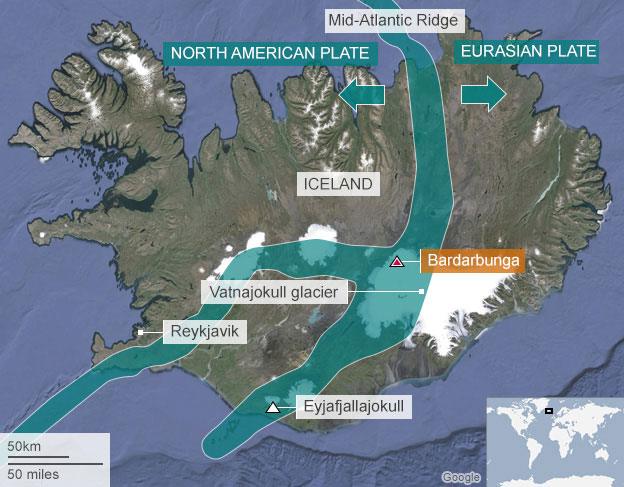
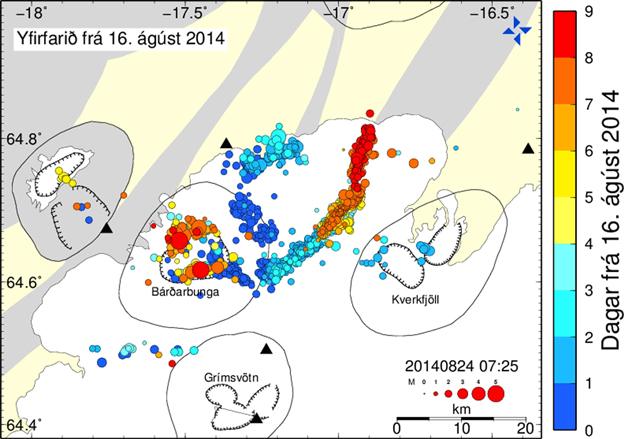
Icelandic Met Office map of earthquakes around Bardarbunga between 16 and 24 August
Here's an odd thing. Even though volcanic eruptions have had terrible consequences through the ages, Icelanders love their volcanoes. They name their daughters after them, like Hekla and Katla.
They respect them. There's just something majestic about volcanoes, like having a lion in the house. We know they can be dangerous, but we've learned to live with them.
Our country is young and dynamic, still being moulded and shaped by nature. Maps have to be changed every few years because of the continuous seismic movement, appearances of new craters and the ever-changing coastal line and river flow.
Icelanders exchange stories about where they were when this or that eruption happened, we all tune in to the National Broadcast Service Radio when we feel a robust earthquake, to follow the story. How big was it? Was it just an earthquake or a warning that Mount Hekla is about to erupt? Is it maybe Mount Katla's turn now?
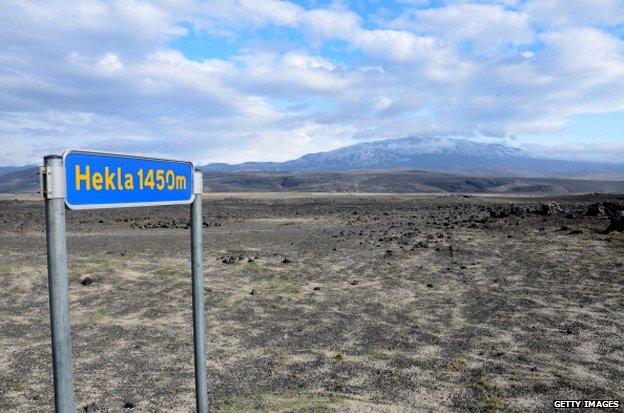
The highlands around the Vatnajokull glacier have been evacuated and the few thousand inhabitants in the northern part, where the flood would probably come down, are alert and ready to leave their homes in an instant. It comes without saying that if glowing hot magma finds its way up to the surface under a glacier, an enormous amount of ice will melt - and that water has to go somewhere.
So for the past couple of weeks I've been refreshing websites and messaging my friends and family: Has it started? Not yet? Now? What about now? Or now? Most foreigners thought it was because I was worried about them, but that's not the reason. The capital, Reykjavik, is hundreds of miles away and it's very unlikely that anyone there would be in harm's way.
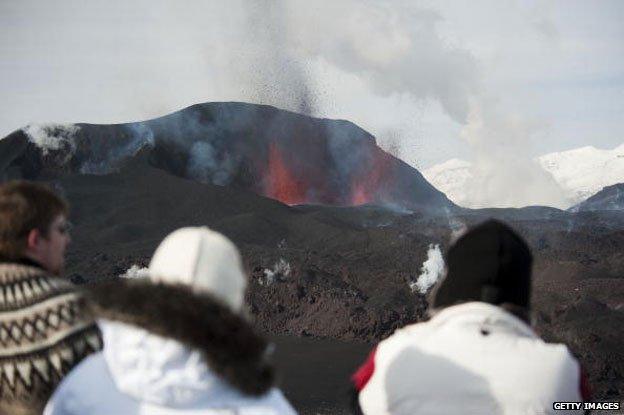
Eruptions are good for the tourism industry
No, the reason is very selfish. I'm just anxious about not being there to see it with my own eyes. It's great having the opportunity to spend a semester at Yale as a World Fellow, but for a seasoned Icelandic TV reporter, it's almost unbearable to imagine that I'll miss the Bardarbunga-Dyngjujokull eruption.
I follow my colleagues who are already camping out there, following the forces of nature at work. New land is being created and they are just so excited about it.
At this moment I'm thrown back to my childhood of growing up with four older brothers and trying my best to keep up with them moving as fast as I can on my little feet, but not keeping up.
While you may be hoping that this eruption will be over soon and no ash will be a threat to any jet engines, in order to save a lot of people a lot of trouble and a lot of airlines a lot of money, my only wish is this:
Dear Bardarbunga volcano system,
Can you please slow down and hold your breath until 15 December, so that I, your loyal admirer, can witness your spectacular show?
Yours truly,
Thora
PS: Scientists now say the eruption might last for years. That's comforting. Kind of.
Thora Arnorsdottir is a senior news editor at the Icelandic National Broadcasting Service and a 2014 Yale World Fellow.

More from the Magazine
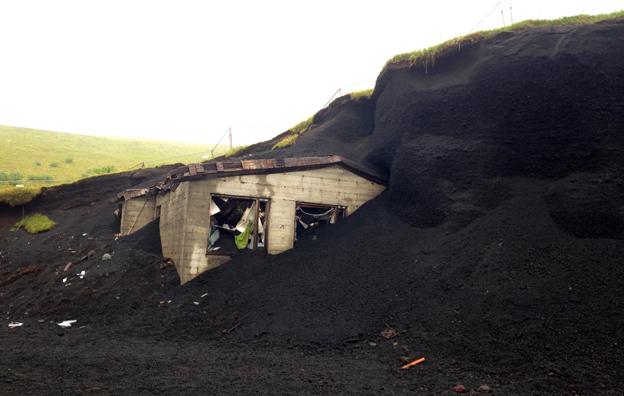
Forty one years ago, an Icelandic eruption buried hundreds of houses. Archaeologists have been uncovering what's left of the buildings, giving the island the nickname "Pompeii of the North". An entire museum has been built around the remains of one of the homes. For some people on the island, however, uncovering the remnants of a traumatic past has been difficult.

Subscribe to the BBC News Magazine's email newsletter to get articles sent to your inbox.